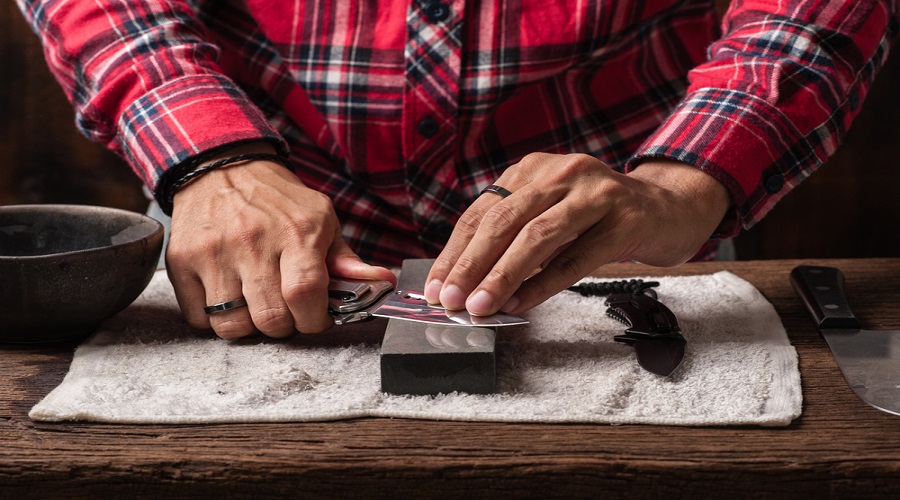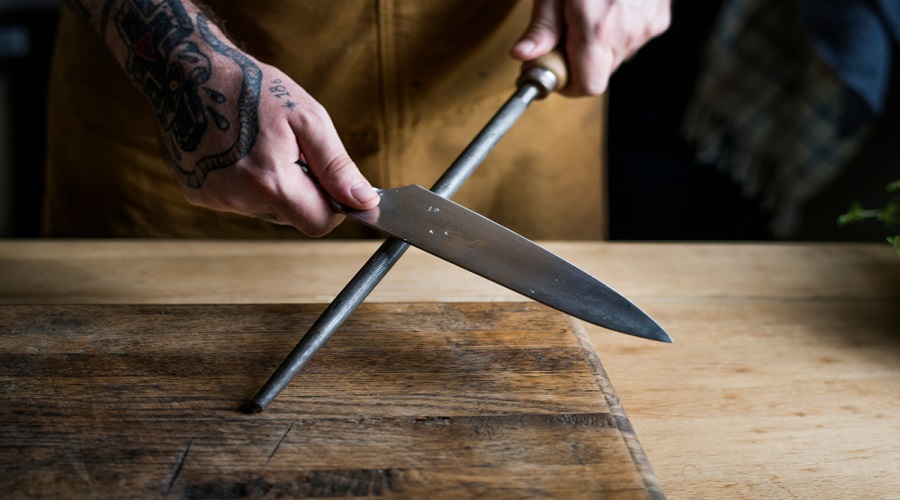What angle should a knife be sharpened?
26th Feb 2020
While sharpening your favorite knife, it's crucial to consider the angle of the edge carefully. If you fail to maintain an edge, the knife becomes nothing more than a hammer or a club. That’s the value of a sharp knife. A thin-edged knife tends to cut better but are not that durable. They can chip, roll, and go dull even with less use. Whereas durability is not an issue with a thick edged knife, but it loses out on slicing tasks. Pairing the right edge bevel or angle to a knife can do wonders by maximizing its performance.
Before we start talking about the different angles, first thing first. Which is, consider the thickness of the blade of your knife. As we said, a very thick blade will exhibit great durability and toughness, but hardly any edge angle will ever make the knife a slicer, regardless of how thin it gets. At the same time, a very thin blade lacks stability even if it has a very thick bevel at the edge. It's all about how you use the knife.

Under 10 Degree Angles
The lower angles are reserved for knives that are typically used for cutting softer materials. Such edges are easy to maintain without damaging them. The lowest angles that we usually see are on straight edge razors as they make them incredibly sharp. These are sharpened to an angle of approx. 7 to 8 degrees. You can use the back of the blade as a reference to determine the angle. A user can damage a straight razor very easily because its edges are quite delicate. So, when using a straight razor, try not to damage the edges.
10 to 17 Degrees Angles
This range is still quite low for most of the knives out there, as the knife sharpened at such an angle becomes too weak to handle any chopping motions. The impact is worse if the blade is made of hard steel that are susceptible to more damage. Although knives sharpened at such an angle are great for smooth cutting actions like slicing meat or other soft items.
17 to 22 Degree Angles
Most of the standard kitchen knives are typically sharpened in between this range, anywhere between 15 to 20 degrees. Many western knives are sharpened at around 20 degrees, and even a few of the Japanese manufacturers recommend sharpening their knives at an angle of roughly 17 degrees. Though these angles are still not highly durable as a total angle under 40 degrees will not respond well to rougher treatment in harder materials.
22 to 30 Degree Angles
If you are using a knife with a durable blade that withstands all kind of pressure, like a hunting knife or pocket knife, this sharpening range is perfect for you. Knives like these perform all sorts of activities like chopping, slicing, sawing, and grinding, which requires the blade to be both durable as well as sharp. That is why an angled edge of 22 to 30 degrees is suitable for such blades.
Over 30 Degrees Angles
Though most of the knives won't benefit from this angle of sharpening, edged tools like an axe, machete, or cleaver are the best tools for this category. Sharpening a blade at an angle beyond 30 degrees makes the edges highly durable. The only disadvantage is that the sharpness diminishes more quickly. That's why additional strength is needed as you use tools for chopping down trees on hard materials. Such blades are, however, still effective in these tasks. This means that an axe must have long-lasting edges to handle tough tasks that the rest of the blade edges cannot handle.

So, the next time you sharpen a knife, the purpose will dictate the blade's sharpening angle. More knowledge of the required sharpening angle edge range will ensure that your knife has a longer lifespan. Keep these knife sharpening tips in mind


 Gift Cards
Gift Cards